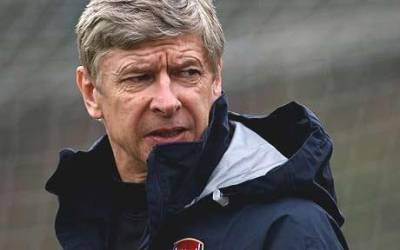It appears that the only ‘red’ Arsenal currently find themselves in is their long-standing club colours, after announcing record pre-tax profits of £56 million earlier this morning. The figures for the financial year ending May 31st, 2010 also show that the club’s pre-tax net profits rose by a further £10.5 million compared to the previous year.
Compared to that of their main rivals, Arsenal’s accounts are highly impressive. Manchester United (who are, according to Forbes’ Rich List, the world’s most valuable sporting entity) reported pre-tax profits of £48.2 million in January, whilst reigning Premier League champions Chelsea announced a £44.4 million loss in December.
Arsenal’s results also declared that the group’s turnover has increased to £379.9 million (up from £313.3 million in 2009), having been boosted by the income generated from the sales of 362 of the luxury apartments that the club erected on the site of their former stadium.
The aforementioned apartments coupled with a social housing site nearby generated a total of £156.9 million in revenue for the club, enabling them to fully repay nearly £130 million’s worth of bank loans (i.e. the debts that were incurred to finance the Highbury Square development) meaning that Arsenal can now fully benefit from and income the property venture generates.
Arsenal’s chief executive Ivan Gazidis seems suitably satisfied with the club’s latest postings;
“The group has made good progress in the last year and I am excited by the opportunities we have in front of us.”
Whereas things may be coming up roses for Arsenal in their business endeavours, apparently the footballing side of the club’s finances aren’t quite as impressive – with Gazidis revealing that profits are slightly down due to a relative lack of home games last season in addition to their ever-increasing wage bill;
“We continue to see upward pressure on player wages. A part of that is because we’ve invested fairly aggressively in our young player pool, and we have secured their long-term future with the club.
This has been a very successful period of investment but it costs money. A part of it is also driven by the external environment in which we operate where player costs continue to go up.”
For those of you not fluent in indecipherable business jargon, the inference is that, by ‘speculating to accumulate’, the wage increases have allowed Arsenal to remain competitive on the field.

Manager Arsene Wenger has refused to blame the decision to up-sticks and move across Islington to the Emirates Stadium in 2006 for his burgeoning side’s lack of recent silverware.
It just so happens that the relocation to Ashburton Grove coincides with the last trophy the Gunners successfully lifted (the FA back in 2005), but Wenger believes that Arsenal haven’t stood still since then but rather set about developing a youth-orientated side that has already challenged for honours on the domestic front;
“I believe it is never easy to move to a new stadium. The first plan for us was to stay at the top level of competition and we managed that. I believe it is a bit simplistic as well to say that we have no trophies, like the club has not existed in the last five years.
We have been fighting for championships and didn’t win them, for sure, but it is not easy to move to a new stadium. If you look at the other teams that have done that and where they are, you realise that is not easy.”
Chief exec Gazidis also echoed Wenger’s sentiments, admitting that – whilst they still cannot compete with ‘the Manchester Citys of this world’ – the club is slowly readying itself to genuinely compete with the big boys once again by faithfully adhering to it’s youth development policy;
“Most of the profit now goes back into the playing side, whether into player contracts or transfer fees. We have a policy of building and not buying, and that’s a difficult path to tread sometimes, but as a result of that policy we’re seeing a tremendous number of good young players progressing and developing into the finished article.”
With the club in a comfortably stable financial position, and masses of fledgling talent at their disposal, the key ingredient that supporters must now add to the mix is patience – and I mean real blind-eye patience – not knee-jerk despair.
It may take one year, it may take three, but with a first-team who’s average age currently hovers roughly around the 23/24 mark, there is plenty of time for fruition and thus it’s an incredible testament to the youngsters that Arsenal have maintained such a consistently high league standing over the past five years – let alone actually challenged for the title on occasion. Nothing more could have been expected from them.
With business ventures proving successful off the field and a modus operandi gradually coming into bloom on it, it seems as though Arsenal are now the most future-proof side in the Premier League, and furthermore – it’s irrefutable evidence that the one eye Wenger has on the future is a lot more dependable than his hindsight.
Add Sportslens to your Google News Feed!